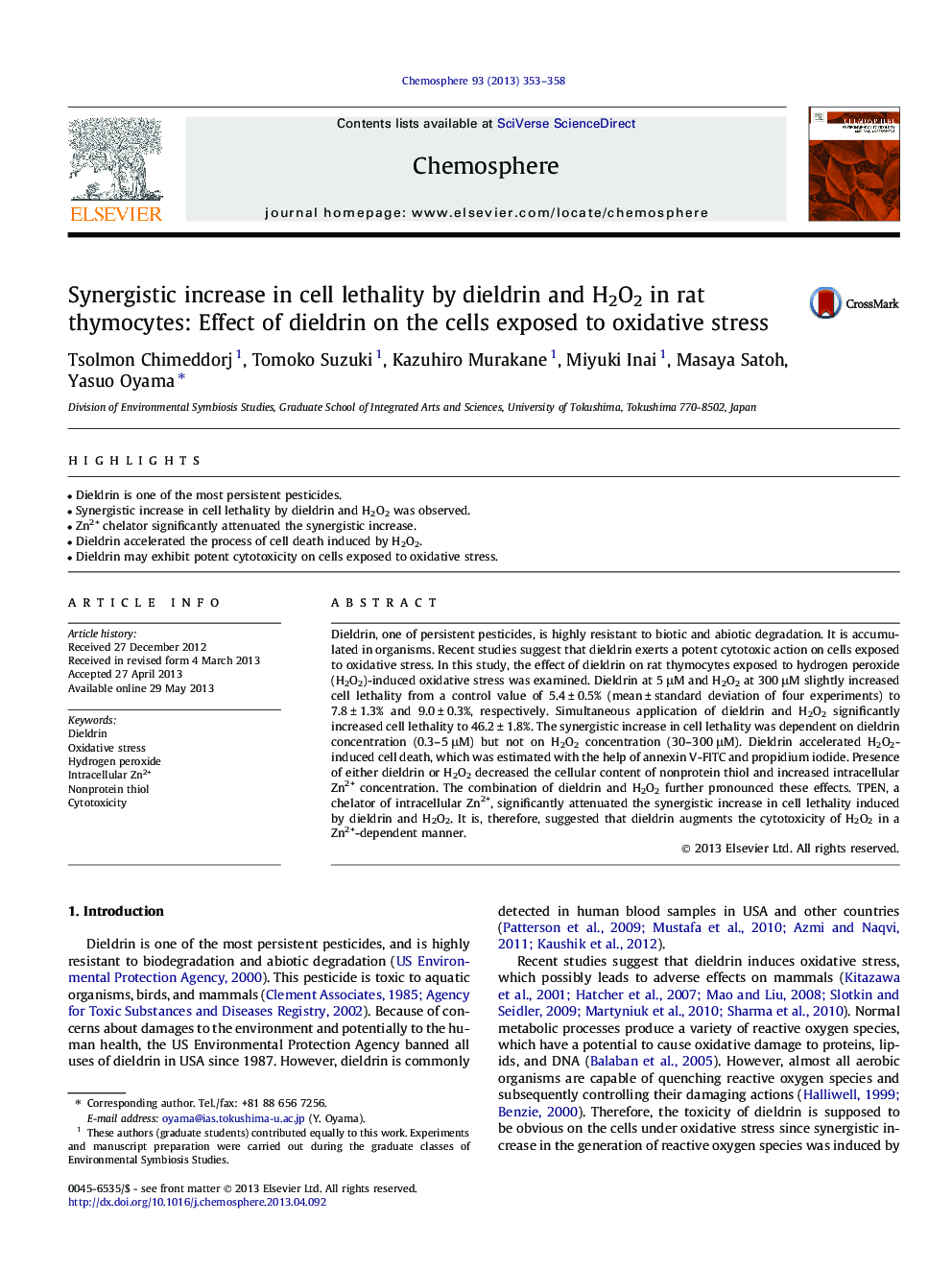| Article ID | Journal | Published Year | Pages | File Type |
|---|---|---|---|---|
| 6310557 | Chemosphere | 2013 | 6 Pages |
Abstract
Dieldrin, one of persistent pesticides, is highly resistant to biotic and abiotic degradation. It is accumulated in organisms. Recent studies suggest that dieldrin exerts a potent cytotoxic action on cells exposed to oxidative stress. In this study, the effect of dieldrin on rat thymocytes exposed to hydrogen peroxide (H2O2)-induced oxidative stress was examined. Dieldrin at 5 μM and H2O2 at 300 μM slightly increased cell lethality from a control value of 5.4 ± 0.5% (mean ± standard deviation of four experiments) to 7.8 ± 1.3% and 9.0 ± 0.3%, respectively. Simultaneous application of dieldrin and H2O2 significantly increased cell lethality to 46.2 ± 1.8%. The synergistic increase in cell lethality was dependent on dieldrin concentration (0.3-5 μM) but not on H2O2 concentration (30-300 μM). Dieldrin accelerated H2O2-induced cell death, which was estimated with the help of annexin V-FITC and propidium iodide. Presence of either dieldrin or H2O2 decreased the cellular content of nonprotein thiol and increased intracellular Zn2+ concentration. The combination of dieldrin and H2O2 further pronounced these effects. TPEN, a chelator of intracellular Zn2+, significantly attenuated the synergistic increase in cell lethality induced by dieldrin and H2O2. It is, therefore, suggested that dieldrin augments the cytotoxicity of H2O2 in a Zn2+-dependent manner.
Related Topics
Life Sciences
Environmental Science
Environmental Chemistry
Authors
Tsolmon Chimeddorj, Tomoko Suzuki, Kazuhiro Murakane, Miyuki Inai, Masaya Satoh, Yasuo Oyama,
